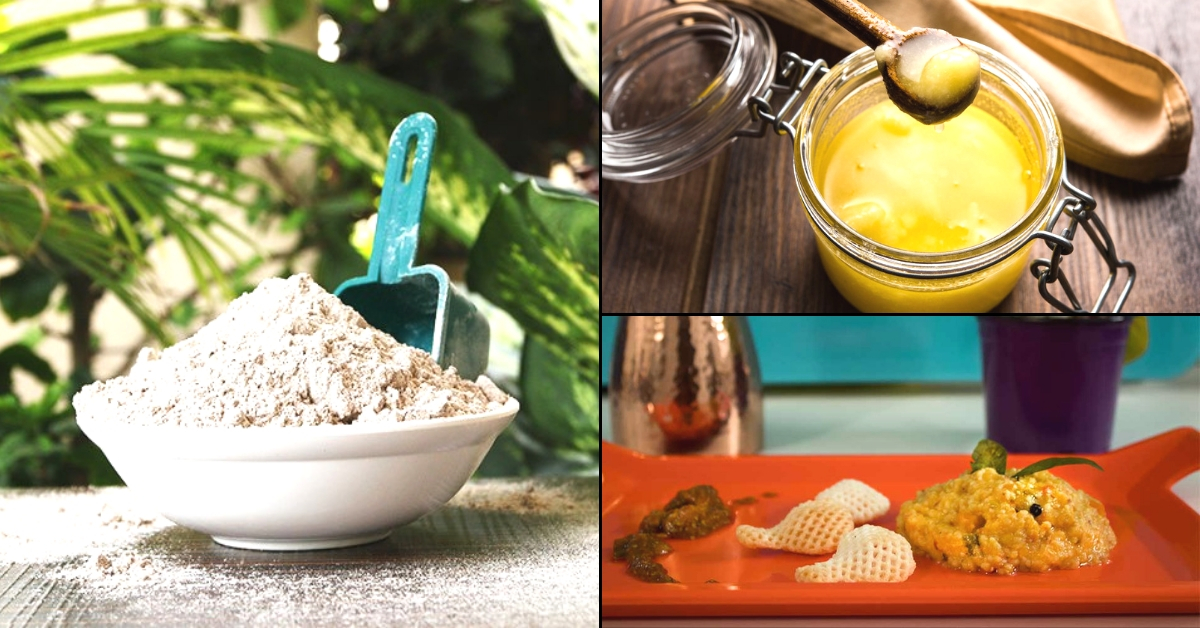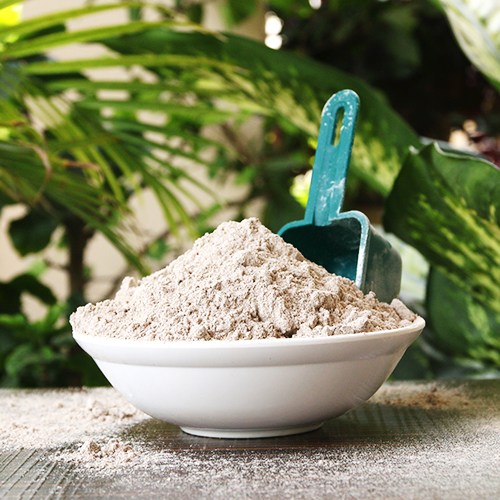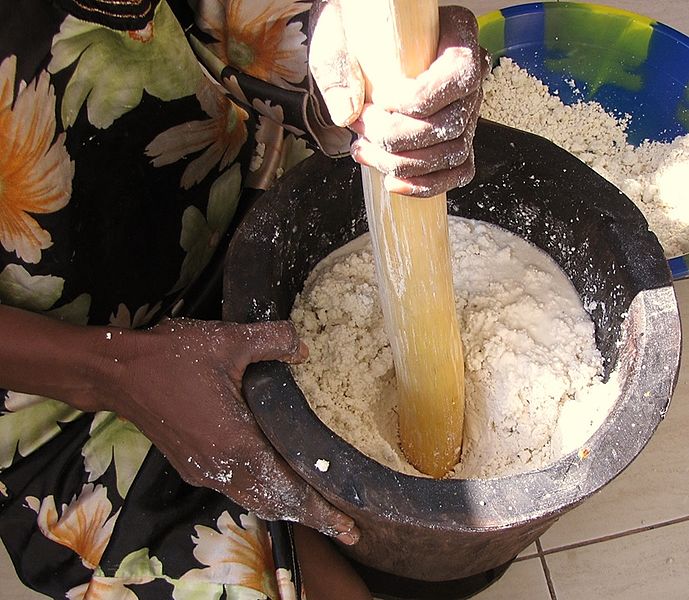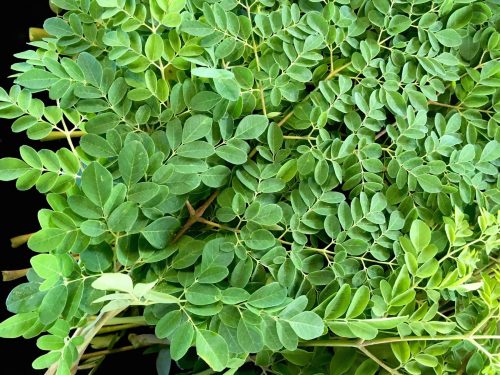Skip Kale & Quinoa, Here Are the Indian Superfoods You Need to Stock up On
Any party of the world’s greatest superfoods nowadays - especially in the West - features some regulars: Quinoa, Açaí Berries, Chia and Salmon. Oh, and Kale.

Growing up, my winter meals were unfailingly accompanied by my grandmother’s tangy Amla pickle or my mother’s Amla Murabba – which she made in large batches to give to friends and neighbours.
The Amlas floated like setting suns in a sea of golden sugar syrup warmed by saffron and cardamom. As kids, we ate Amla Murabba for what it was – a sweet counterpoint to our usually spicy South Indian meals, and sometimes as a snack or quick-fix dessert.
This was long before the idea of superfoods and alkaline diets had entered our minds and dominated the way we look at our food.
Any party of the world’s greatest superfoods nowadays – especially in the West – features some regulars: Quinoa, Açaí Berries, Chia and Salmon. Oh, and Kale.
The common feature of all these foods is that not one of them is available in an average Indian market because they are not native to our country.
Does this mean that, as Indians, we’ve spent all our lives eating food devoid of antioxidants and omega-3?
Hardly.
Here are some superfoods from our backyards:
Millets (not quinoa):

For a long time, millets were known as coarse grains (unlike refined white rice and wheat) and remained unpopular among urban Indians. The humble grains are now witnessing a renaissance and finding a place on the menus of elite restaurants in a range of avatars from ragi tacos to jowar pizza.
Ecologically, millets are superior to rice and wheat because they are amenable to dryland farming with rainfed irrigation, and require lower chemical inputs. Nutritionally, they are a powerhouse of fibre and micro-nutrients, and their low glycemic index makes them a good choice for diabetics.
Moreover, since millets are small grains that are difficult to separate into their component parts, the nutrient value of the whole grain is usually retained after cooking – unlike rice and wheat.
You can add millets like Barnyard, Kodo, Proso, Bajra and Foxtail millet to your diet easily. Substitute them for polished rice and quinoa, or use them in salads and desserts.
Millet rava can be used in place of wheat semolina to make upma and khichdi. Millet flour is a good substitute for maida and atta.
You can find a whole range of millet products here.
Ghee and local oils (not olive oil):

Source: Pinterest
Ghee makes everything better, but there’s more to it than just its heady fragrance.
Ghee is rich in linoleic acid, an essential fatty acid that is known to have anti-cancer properties. A study also found that linoleic acid inhibits the growth of certain types of tumour cells and eventually kills them.
Find more such healthy superfoods at The Better India Shop here.
And even if Ghee is not your thing, remember you have plenty of options before reaching all the way across the world for olive oil. Traditional cold-pressed oils extracted from coconut, groundnut, sesame and mustard have been used for generations, valued for their nutritional, medicinal and cosmetic benefits.
Coconut oil is a rich source of lauric acid which provides immunity against infections. Peanut oil is a good source of unsaturated fats and phytosterols which benefit heart health. You can buy some here.
Rajgira (not quinoa):

Mostly known for its use in Vrat or Faral foods – eaten by those who observe fasts during festivals like Navratri. Rajgira, also called amaranth or ramdana, is an ancient grain that, like its celebrity cousin quinoa, has been an integral part of the diets of indigenous communities for generations.
Unlike quinoa though, amaranth is grown widely in India and it far outdoes the Andean grain in its iron, protein, lysine and calcium content. From fluffy puris and crisp vadas to kadhi and dosa, rajgira flour is a versatile ingredient.
Not ready to make the switch? Simply adding a few spoons of rajgira flour to your regular flour is a good way of upping your iron intake and adding some diversity to your diet. Buy some here.
Cassava flour (not wheat flour):

Source: Wikimedia
Cassava or tapioca is a starchy tuber that’s enjoyed when boiled, fried, as a flour, and most commonly as ‘sabudana’ – a heavily processed form of the root with little nutritional value.
Its high carbohydrate content and low glycemic index make it a good substitute for refined wheat flour and suitable for diabetics. Since it is naturally gluten-free it is good for those with gluten allergies as well.
Among its benefits are its ability to feed the good bacteria in the gut and reduce inflammation and improve gut health. Use cassava flour as a substitute for maida in your baking to get more wholesome goodies without losing out on the taste.
Cooler than kale:

Amaranthus, mustard, radish and beetroot greens, malabar spinach, moringa leaves, palak and gongura, colocasia. This is just a tiny sample of the leafy green vegetables in India.
What this list does not include is the plethora of local greens known by regional names, some of which grow wild in fields and water bodies, others that are foraged and make an important source of nutrition for indigenous and rural populations.
Such is India’s natural diversity that you can eat different greens every season, using them in anything from spinach quiches to dals and chutneys.
Bael is bae:

Source: Wikimedia
India is home to a range of climatic zones – from the temperate north to the hot, muggy south – which makes it fertile ground for an impressive variety of seasonal, native fruits that are virtually unknown and lose out to imported, frozen fruits in supermarkets.
So, visit your local market instead and buy amla instead of acai berries. In summer, relish the luscious tadgola and the irresistible jamun.
With the relenting of the monsoon, star fruit or karambola makes its appearance. There are more: karondas or wild cherries and bilimbi, which is crisp and tart and used along the coast to sour curries and make wine; and pomelo or chakotra which is mildly bittersweet and best enjoyed with a sprinkling of salt and chilli powder.
By choosing seasonal fruits, you are guaranteed to have produce that is:
- Harvested at the peak of freshness, so nutrient content is highest.
- Grown closer to you so it’s more energy efficient and doesn’t spoil during transport.
- Sold during its season, before it spoils or needs to undergo unnatural preservation.
So don’t forget to go shopping!
Find more such healthy superfoods at The Better India Shop here.
(Edited by Vinayak Hegde)
Like this story? Or have something to share? Write to us: [email protected], or connect with us on Facebook and Twitter.
This story made me
- 97
- 121
- 89
- 167
Tell Us More
We bring stories straight from the heart of India, to inspire millions and create a wave of impact. Our positive movement is growing bigger everyday, and we would love for you to join it.
Please contribute whatever you can, every little penny helps our team in bringing you more stories that support dreams and spread hope.



















